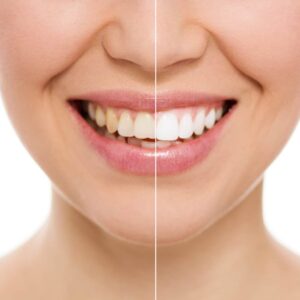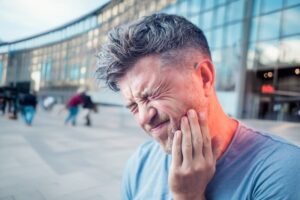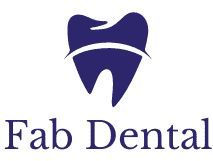Overbite issues are a common dental problem affecting millions of people worldwide. This condition occurs when the upper teeth significantly overlap the lower ones, leading to various complications such as impaired speech, eating difficulties, and dental health problems.
Invisalign treatment for overbite is a modern solution that has transformed the way overbite correction is approached. Unlike traditional braces, Invisalign braces for overbite are clear, removable aligners custom-made to gradually move your teeth to the desired position. What makes Invisalign a popular choice for overbite correction is its convenience and subtlety.
It’s incredible to witness the transformation in the Invisalign overbite before and after pictures, a testament to the effectiveness of this treatment. Invisalign not only addresses overbite problems but also improves the overall alignment of the teeth.
Fixing overbite with Invisalign is a process that requires time and commitment to the treatment plan. It involves the use of several aligners over the treatment period, adjusting the position of the teeth gradually until the overbite is corrected. Moreover, Invisalign also works for other misalignment issues, making it a versatile treatment option.
With Invisalign, overbite adjustment doesn’t have to be a daunting process; it’s a modern approach to achieving a healthier and more confident smile.

What is an Overbite Issue?
An overbite issue is a dental condition where the upper teeth significantly overlap the lower teeth when the mouth is closed. This common malocclusion can be due to a variety of causes, ranging from genetics and habitual behaviors to poor oral health practices.
Overbite problems can lead to several effects on oral health. It can cause difficulty in chewing and speaking, increased wear on the enamel of the teeth, jaw pain, and may even alter the shape of the face. In severe cases, it can lead to complications such as gum disease and tooth decay.
In the realm of orthodontics, various treatments are available for overbite correction. Among these, Invisalign treatment for overbite has been gaining popularity due to its effectiveness and convenience. Invisalign braces for overbite work by gradually shifting the alignment of the teeth, leading to overbite adjustment. Real-life examples of Invisalign overbite before and after cases show significant improvement in the patient’s oral health and smile aesthetics.
In conclusion, overbite issues can have substantial effects on oral health, but with options like Invisalign for overbite correction, these problems can be effectively addressed. Remember, it’s always important to consult with your orthodontist to discuss the best treatment plan for your specific situation.
Introduction to Invisalign
Invisalign is a revolutionary dental treatment that has gained significant popularity among patients worldwide. Unlike traditional braces, Invisalign offers a virtually invisible method of straightening teeth. This treatment involves wearing a series of clear, removable aligners that gradually shift your teeth into the desired position. Invisalign’s clear aligners are custom-made to fit snugly over your teeth, offering comfort and ease during the treatment.
One of the most common dental issues that Invisalign can address is an overbite. Overbite correction with Invisalign has been an effective treatment method for many patients. Overbite issues treated by Invisalign involve the use of special aligners designed to move the teeth and jaw into a more balanced and healthier position. Patients often report significant overbite improvement with Invisalign treatment.
Invisalign’s ability to fix overbite problems is remarkable. Before and after images of Invisalign for overbite correction show significant changes and improvement in the patient’s dental structure. The Invisalign treatment for overbite not only helps align the teeth but also contributes to the overall oral health of the patient. Fixing an overbite with Invisalign can prevent other dental complications that can arise from untreated overbite issues.
Invisalign braces for overbite are a popular choice among patients due to their discreet nature and effectiveness. Overbite adjustment with Invisalign allows patients to undergo treatment without the noticeable metal brackets and wires associated with traditional braces. This has led to a rise in the popularity of Invisalign among both adults and teenagers.
In conclusion, Invisalign is a versatile dental treatment that effectively addresses various dental issues, including overbites. Its innovative design and proven results have made it a preferred choice among dental patients worldwide.
Can Invisalign Fix Overbite Issues?
Invisalign is a popular orthodontic treatment that has been successful in treating various dental issues, including overbite. Overbite is a condition where the upper teeth overlap the lower teeth more than normal, leading to various problems such as speech issues, jaw pain, and aesthetic concerns.
Invisalign works by gently shifting your teeth into the desired position over time, correcting the overbite. This is done using a series of clear aligners that are custom-made for your teeth. Each aligner is slightly different from the last, gradually moving your teeth into the correct position. One of the benefits of using Invisalign for overbite correction is that it’s nearly invisible, allowing you to maintain your confidence during the treatment process.
Before and after images of patients who have undergone Invisalign treatment demonstrate the effectiveness of this approach in addressing overbite issues. “Invisalign overbite before and after” photos often show a significant improvement in the alignment of the patient’s teeth. The treatment not only enhances the smile’s aesthetic appeal but also resolves issues associated with overbite, such as difficulty in chewing and speaking.
In conclusion, Invisalign is a viable and effective treatment option for correcting overbite issues. It offers a discreet, comfortable, and convenient solution for patients, contributing to its growing popularity in orthodontic care.
How Does Invisalign Work to Correct an Overbite?
Invisalign is a revolutionary tool in the field of orthodontics, providing a discreet and comfortable alternative to traditional metal braces. It has proven to be particularly effective in addressing overbite problems. The Invisalign treatment for overbite involves the use of custom-made aligners that gradually move the teeth into the desired position. These aligners are designed based on a detailed 3D scan of your mouth, ensuring a perfect fit and effective treatment.
The Invisalign process begins with a comprehensive oral examination to evaluate the severity of the overbite. After which, a digital scan is taken to create a precise 3D model of your mouth. This model is used to formulate a personalized treatment plan, including the production of custom-made aligners. The aligners are made of a clear, flexible plastic material, making them virtually invisible and comfortable to wear.
Throughout the Invisalign treatment, you will be provided with a series of aligners, each slightly different from the last. The aligners apply gentle but constant pressure on your teeth, causing them to move gradually. This movement, over time, results in overbite correction with Invisalign.
The length of the treatment varies depending on the severity of the overbite. However, many patients have seen significant Invisalign overbite before and after changes within 12 to 18 months. It’s also noteworthy to mention that the treatment is not only about improving aesthetics but also about enhancing oral health. Overbite issues treated by Invisalign result in better bite alignment, which reduces the risk of other dental problems in the future.
Duration of Invisalign Treatment for Overbite Correction
When discussing the use of Invisalign for overbite correction, one of the first questions that patients often ask is how long the treatment will take. The answer to this can vary as it largely depends on the severity of the overbite and the individual’s response to the treatment. However, there are general timelines that can be considered when looking at Invisalign treatment for overbite.
Overbite correction with Invisalign often takes between 12 to 18 months. However, some cases may require up to 2 years for complete overbite adjustment with Invisalign. This is considerably less time than traditional braces which can take up to 3 years or more. Regular check-ups during the course of the treatment are necessary to monitor the progress of the overbite correction.
Before and after photos of patients who have undergone Invisalign treatment for overbite show significant improvement. It’s important to remember though that every patient’s case is unique. Factors such as age, severity of the overbite, and adherence to the Invisalign treatment plan can affect the duration and the results of the treatment. Invisalign braces for overbite are custom-made and require the patient to wear them for 20 to 22 hours a day for the best results.
Overbite problems treated by Invisalign include both mild and severe cases. The treatment effectively helps in fixing overbite with Invisalign by gradually shifting the teeth to the desired position. It’s a convenient and less noticeable solution for overbite issues. Invisalign for overbite correction has gained popularity due to its effectiveness and the convenience it offers compared to traditional braces.
Considerations During Invisalign Treatment
When it comes to the correction of overbite issues, Invisalign treatment has become a popular choice. It’s a non-invasive method that can bring significant improvement in a patient’s smile. However, there are certain considerations and restrictions that patients must take into account while undergoing Invisalign treatment.
Firstly, eating habits need to be modified. Unlike traditional braces, Invisalign aligners are removable. This allows patients to eat and drink whatever they like. But, the aligners must be taken out while eating or drinking anything other than water. They also need to be cleaned before being reinserted. This is crucial to prevent food particles from getting trapped and causing dental issues.
Secondly, care for the aligners is paramount. They need to be cleaned regularly to maintain oral hygiene. Also, they should be worn for 20-22 hours a day for the best results. The treatment’s success largely depends on the patient’s commitment to wearing the aligners consistently.
Lastly, regular check-ups with the dentist are necessary to monitor the progress of the overbite correction. This allows the dentist to make any necessary adjustments to the treatment plan and ensure that the overbite problems are being effectively addressed.
The road to overbite correction with Invisalign may require some lifestyle adjustments, but many find it a small price to pay for the improved self-confidence that comes with a healthier, more beautiful smile.
Invisalign Treatment: Pain and Side Effects
Invisalign, a popular option for overbite correction, can be a great choice for many. However, like any treatment, it may come with some discomfort and side effects. Understanding these can help you make an informed decision about whether or not Invisalign for overbite correction is the right choice for you.
Firstly, it’s important to understand that Invisalign is designed to make gradual adjustments to the positioning of your teeth. This means that you may experience some discomfort, especially when you first begin treatment or when you switch to a new set of aligners. This discomfort is usually mild and fades away after a few days.
Secondly, you may notice some minor changes in your speech when you first start wearing your Invisalign aligners. This is commonly referred to as a ‘lisp’ and it’s usually temporary. As you get used to your aligners, any changes in your speech should improve.
Another side effect of Invisalign treatment for overbite correction can be dry mouth or an increased feeling of thirst. This is because wearing the aligners can reduce the flow of saliva in your mouth. It’s important to stay well-hydrated during treatment to help manage this.
Finally, while Invisalign aligners are made from smooth, clear plastic, some people find that they cause slight irritation to the cheeks and gums, especially in the beginning. If you experience this, it’s a good idea to speak to your orthodontist. They may be able to offer solutions such as orthodontic wax to help ease any discomfort.
Remember, all of these side effects are usually temporary and can be managed with the right care and advice from your orthodontist. Most people find that the benefits of Invisalign, such as the ability to remove the aligners for eating and cleaning, the nearly invisible appearance, and the effective results in fixing overbite issues, outweigh the minor discomfort and side effects that may be experienced during treatment.
“Addressing overbite concerns is not only about achieving a beautiful smile, it’s about optimizing oral health. With advanced orthodontic solutions like Invisalign, we can indeed correct overbite issues effectively and discreetly. It’s a comfortable and convenient treatment that has transformed countless smiles.”
– Dr. Guneet Alag, DDS, FAGD, Fab Dental, Hayward, CA.
Conclusion
As we wrap up our discussion on whether Invisalign can fix overbite issues, it is important to reiterate the key points. Invisalign treatment for overbite has been shown to be effective in many cases. This clear, convenient, and modern approach to orthodontics is revolutionizing the way we correct dental issues.
Overbite correction with Invisalign is made possible through the use of custom-made aligners that gradually shift your teeth into their proper positions. The results, as shown in various ‘Invisalign overbite before and after’ photos, are often impressive, offering a significant improvement in both appearance and function.
Moreover, Invisalign braces for overbite are not only a treatment option but also a preventive measure against potential overbite problems. Overbite issues, when left untreated, can lead to a variety of dental complications. Using Invisalign for overbite correction can help to minimize these risks.
In conclusion, fixing overbite with Invisalign is indeed a practical and effective solution. The journey to a perfect smile may require time and patience, but the results – a healthier, more confident smile – are well worth it. Overbite adjustment with Invisalign could be the key to unlocking your best smile yet.
Remember, every individual case is unique, so it’s always best to consult with your orthodontist to determine the best treatment plan for your specific needs.
FAQs
What is Invisalign?
Invisalign is a type of clear, removable orthodontic treatment that uses a series of custom-made aligners to gradually shift your teeth into their correct positions. It's an alternative to traditional braces and is preferred by many due to its less noticeable appearance.
What is an overbite?
An overbite is a dental condition where the upper front teeth overlap the lower front teeth more than normal. It's also referred to as a 'deep bite'.
Can Invisalign fix overbite issues?
Yes, Invisalign can be used to correct mild to moderate overbite issues. The aligners gradually shift the position of your teeth to correct the overbite. However, severe cases may require additional orthodontic treatments or procedures.
How does Invisalign treat overbite issues?
Invisalign uses a series of custom-made aligners that apply consistent pressure to your teeth to gradually move them into the desired position. This includes moving the upper teeth back and/or the lower teeth forward to correct the overbite.
How long does it take for Invisalign to correct an overbite?
The length of treatment varies based on the severity of the overbite but can typically range from 6 months to 2 years. Your orthodontist will be able to provide a more accurate timeline based on your specific case.
Is the Invisalign treatment painful?
Invisalign may cause some initial discomfort as your teeth adjust to the aligners. However, this discomfort is typically less than that experienced with traditional braces and usually subsides after a few days.
How often do I need to wear my Invisalign aligners?
For optimal results, you should wear your Invisalign aligners for 20-22 hours per day. They should only be removed for eating, drinking, brushing, and flossing.
Can I eat with my Invisalign aligners in?
No, you should remove your aligners before eating or drinking anything other than water to prevent damage to the aligners.
What happens if my overbite isn't corrected?
If left untreated, an overbite can cause several issues such as difficulty speaking and chewing, jaw pain, increased wear on the lower teeth, and increased risk of tooth decay and gum disease.
Can Invisalign fix other teeth alignment issues?
Yes, in addition to overbites, Invisalign can also correct underbites, crossbites, gaps between teeth, and overcrowded teeth. However, the effectiveness of treatment depends on the severity of the issue.







